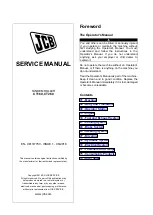
Phoenix LT4 Lane Machine Operation, Maintenance, and Parts Manual
2-2
Rev. Date:
01/22
61-900040-000
m
achine’s floating vacuum head. The floating action allows the vacuum head to conform to
changes in the lane surface. The cleaning operation is performed only during the forward
segment of the first pass regardless of any second pass settings.
Conditioning
The conditioning operation (also known
as lane conditioning, oiling, or
dressing) applies oil by brushing it onto
the lane during the forward and reverse
passes of the machine. The oil is
stored in the oil tank and is applied to
the lane via the wicking foams, transfer
roller, and buffer brush shown in
Figure 2- 2 and Figure
The oil tank has six adjustable
segments. Each segment has its own
wicking foam and adjustment bar. This
allows for the adjustment of each
segment independently of the others.
Factory default settings apply less oil on the outer 7
boards on each side of the lane (approximately 7.5
inches or 19 cm). The areas of the lane on boards 8
through 10 (approximately 3.25 inches or 8 cm), known
as the track, have slightly more oil applied. The middle
20 boards have a heavy amount of oil applied. This
produces a typical oil pattern for most bowlers. All oil
patterns may be adjusted to fit the center's needs.
Buffing
Buffing can be performed with or without applying new oil. It is
NOT
recommended to buff
the lane without the application of new oil. It is
NOT
recommended to buff or oil a dirty lane.
The buffing only function can also be used to deplete residual oil in the buffer brush by
alternating clean only and buff only programs until no oil is visible on the lane after the buff
only program. Refer to Section 6
–
Determining the Oil Pattern
for more information.
Factory Programming
The Phoenix LT4 is capable of performing a single pass (the machine travels down the lane
forward and returns in reverse) and double pass (the machine will travel down the lane a
second time). If a second pass is used more oil is applied and buffed onto the lane. Each
pass is divided into two segments, a forward segment and a reverse segment. On the first
pass forward segment, the lane is stripped of any existing oil over its entire length while
new oil is applied and buffed out for the distances entered. On the return segment, the lane
is buffed and then oiled to the foul line using the same distance settings. If a second pass is
used, more oil is buffed onto the lane. No cleaning occurs during a second pass operation.
Figure 2- 2
Figure 2- 3
Buffer
Brush
Transfer
Roller
Wicking
Foams
Transfer Roller
Buffer Brush
Wicking Foams
Adjustment Bars















































